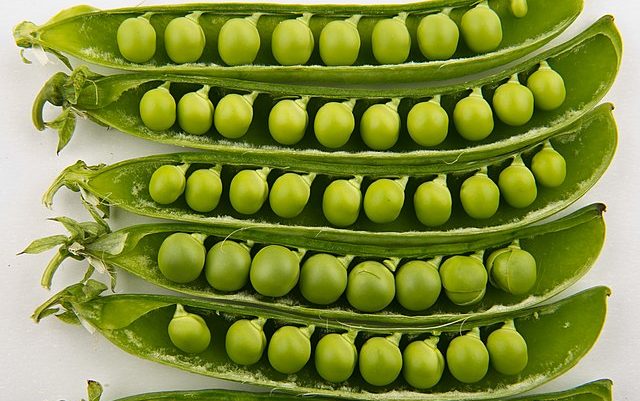News summary: in the northern city of Groningen, in the Netherlands, an efficient peas harvesting regime meant to relay the crop to the pot of the buyer in less than ten hours of harvesting was recently underway, relates Jan Buseman, who runs an agricultural company.
The preserved peas were harvested last week at Jan Buseman’s company in Scheemda, Groningen, under excellent conditions. ‘That went pretty smoothly, the conditions were still dry then and so was the crop. In a few days all the peas were off the land.’
Buseman grows the peas via the De Schakel Cooperative Growers’ Association. The contract worker arranges for threshing and transport to the cannery.
When harvested, the peas are immediately tipped into a waiting truck for transport to the factory. Buseman: ‘If there is no truck, then threshing also comes to a standstill. The peas are processed immediately to guarantee the best quality. In my opinion, the aim is from harvest to pot in ten hours at the most.’
The yields and exact destination of the peas are not yet known to Buseman. But he doesn’t expect the harvest to be as good as last year. ‘Back then, everything was top in our region, but this growing season is more difficult.’ The peas on the Groningen arable farm were sown in mid-May in still fairly moist soil. But because of the rapid drying out, the entrepreneur had to irrigate for a good turnout.
Distribution in the building plan
This is Buseman’s second year growing peas. He calls it an attractive crop that ensures more spread in the cropping plan. According to him, an additional advantage is that peas are designated as a nitrogen-fixing crop in the Common Agricultural Policy. ‘As a result, we score higher in the eco-scheme and that is a nice bonus.’
After the peas, Buseman will use the plot for the cultivation of winter wheat. ‘We’ll leave the land as it is for now and plow it when the grain harvest is over. Then we let the soil weather a bit and finally we want to sow the winter wheat for next year around mid-October.’
Source: nieuweoogst.nl
